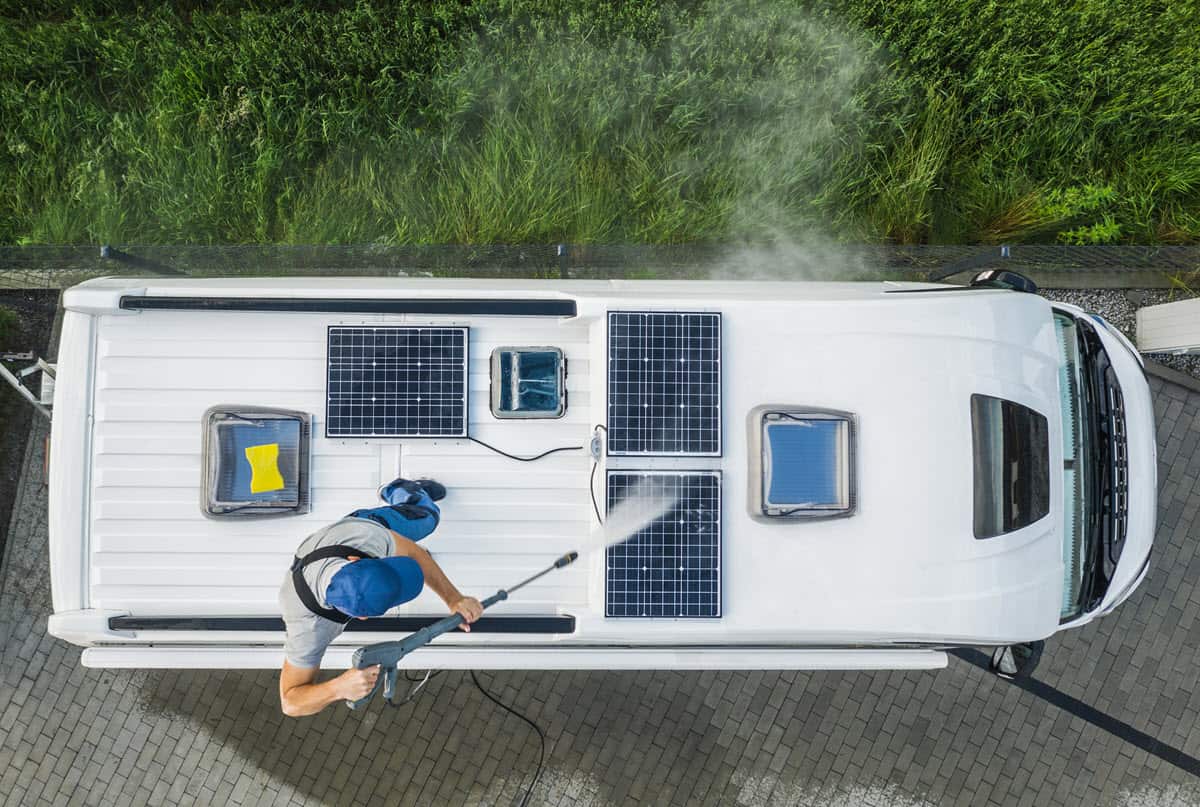Solar generators have become increasingly popular as reliable and eco-friendly power sources for various applications. To ensure your solar generator operates at peak efficiency and lasts for years, implementing a consistent maintenance routine is crucial. This article provides essential tips and best practices for maintaining your solar generator, keeping it in top condition and ready for use when needed.
Regular Cleaning
One of the most critical aspects of solar generator maintenance is regular cleaning, particularly of the solar panels.
Solar Panel Cleaning
Over time, dirt, dust, and debris can accumulate on the panels, reducing their efficiency and power output. To clean your solar panels effectively:
- Remove dirt and debris gently using a soft-bristled brush or microfiber cloth.
- Use a mild soap solution for stubborn stains and rinse with clean water.
- Avoid abrasive materials or harsh chemicals that can damage the panels.
- Clean panels at least once every few months or more frequently if in a dusty environment.
Generator Unit Cleaning
Keep the generator unit itself clean by:
- Wiping it down regularly with a static-free microfiber cloth.
- Using slightly dampened cloths for more thorough cleaning, but avoid excess moisture.
- Inspecting for any signs of damage or wear during cleaning.
Regular cleaning maintains efficiency and helps in understanding the technology behind solar-powered generators by allowing you to observe the components closely.
Proper Ventilation and Temperature Control
Heat management is crucial for solar generator performance and longevity.
- Place the generator in a cool, well-ventilated area when in use.
- Avoid direct sunlight or enclosed spaces that can lead to overheating.
- Ensure cooling fans are functioning properly to maintain optimal internal temperature.
- Consider using an additional fan to enhance airflow in hot environments.
Proper temperature control is especially important when considering the role of solar generators in emergency preparedness, as extreme conditions can affect performance.
Moisture Control
Protecting your solar generator from moisture is essential:
- Keep the generator as dry as possible at all times.
- Avoid exposing it to rain or high-humidity environments.
- If moisture does accumulate, ensure proper drying before storage or use.
- Use water-resistant covers when storing or transporting the generator outdoors.
Battery Maintenance
The batteries are a critical component of your solar generator. Proper maintenance includes:
- Regularly inspecting for signs of damage, leaks, or corrosion.
- Keeping the batteries clean and dry.
- Storing in a cool, well-ventilated area.
- Following manufacturer guidelines for charging and discharging cycles.
- Cycling the batteries every six months by using a quarter of their capacity and recharging to 50-75%.
Understanding the role of inverters in solar generators can help you better maintain the overall system, as inverters play a crucial role in battery management.
Proper Storage Practices
When not in use, proper storage is critical to maintaining your solar generator:
- Store in a cool, dry place away from direct sunlight and extreme temperatures.
- Use a waterproof cover or case to protect from moisture and debris.
- Ensure the generator is completely turned off before storage.
- Maintain a battery charge of around 50% during long-term storage.
- Avoid storing in areas with fluctuating temperatures.
Proper storage practices significantly impact solar generator lifespan, so following these guidelines is crucial.
Regular Performance Monitoring
Keeping track of your solar generator’s performance helps identify issues early:
- Use a digital multimeter to check the voltage and current output of solar panels, batteries, and inverters.
- Consider installing a monitoring system or app for real-time energy production and consumption data.
- Keep a log of performance data to track changes over time.
- Address any noticeable drops in performance promptly.
Regular monitoring can also help in conducting a cost-benefit analysis of owning a solar generator, allowing you to assess its long-term value.

Connection Maintenance
Ensure all connections remain secure and corrosion-free:
- Inspect all connections for wear, corrosion, or looseness.
- Use a torque wrench to tighten connections to manufacturer specifications.
- Apply dielectric grease to connections to prevent corrosion.
Safe Transportation
When moving your solar generator:
- Secure it properly to prevent damage from vibrations or impacts.
- Use padded cases or original packaging when available.
- Avoid exposing it to extreme temperatures during transit.
Regular Professional Inspections
Consider having your solar generator professionally inspected:
- Schedule annual check-ups with a qualified technician.
- Have them assess overall performance, battery health, and electrical components.
- Address any recommendations for repairs or upgrades promptly.
Professional inspections can provide insights into how your solar generator compares to other power sources, such as in a solar generators vs gas generators comparison.
Conclusion
Regular maintenance is essential for keeping your solar generator in top condition, ensuring reliable performance, and maximizing its lifespan. By following these tips and best practices, you can optimize its efficiency and longevity.
Consult your solar generator’s owner’s manual for specific maintenance instructions and recommendations. With proper care and attention, your solar generator will provide you with a dependable and sustainable power source for years, whether for emergency preparedness, off-grid living, or outdoor adventures.

Leave a Reply